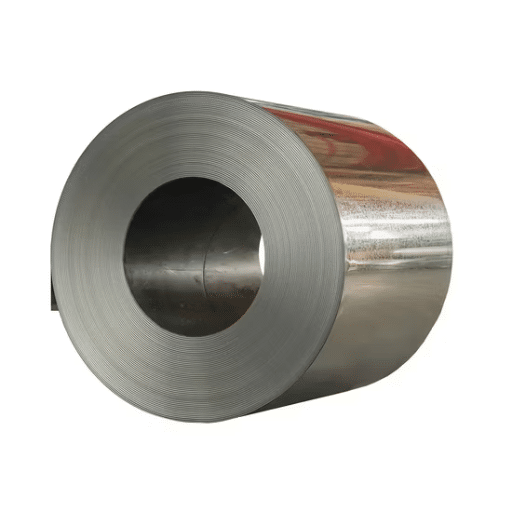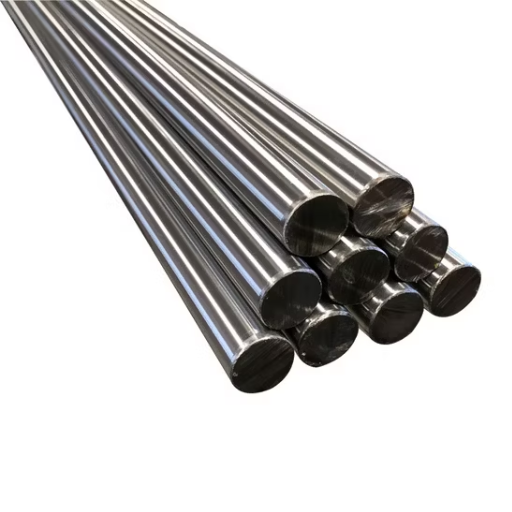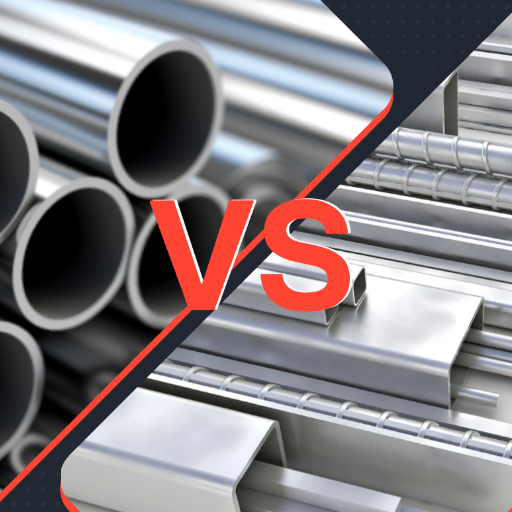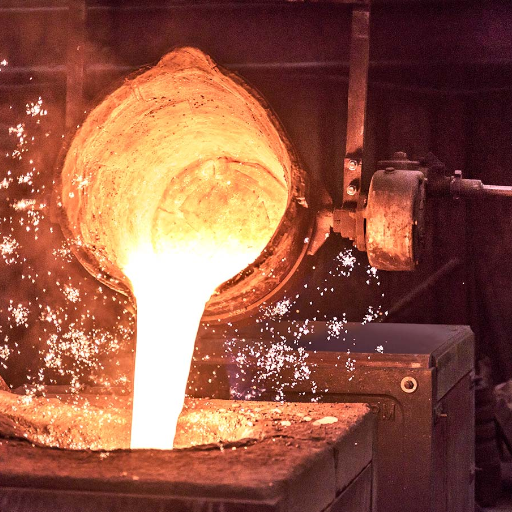From construction to automotive to energy, virtually every industry relies on galvanized steel coils. These highly specialized products are essential. In the following paragraphs, we will delve into the core properties and use cases of galvanized steel coils while covering their extensive applications. Moreover, this blog post will cover the manufacturing process, its advantages, and the value added through increased durability, enhanced corrosion resistance, and reduced inefficiency across industrial uses. Finally, this post will cover the most recent developments on the adaptable material and its strategic applications tailored to industry needs. From industry experts to newcomers alike, anyone looking for a holistic strategically valuable resource will find contextually relevant galvanized steel coil information here.
What is a galvanized steel coil and how is it made?

A galvanized steel coil is formed by coating a steel sheet with a layer of zinc to mitigate probable case of corrosion. The higher the quality of zinc alloyed on the steel sheet, the greater the dampening of elemental rust such as moisture. The coating also enhances the durability of the steel sheet. In terms of manufacturing, hot-dip galvanization in which the zinc is molten is preferable for thicker applications, while for finer applications where a smoother finish is required, smoother surfaces electro-galvanization is recommended.
Understanding the galvanization process
Galvanization improves the steel materials against corrosion. It increases the life span of the parts as pre-coated galvanized steel is more rust-resistant. Coating steel with zinc via hot dip galvanization or electro-galvanization protects the steel from moisture and oxidation. Construction industry uses galvanization for commercial structural steel and structural roof decking. Automotive industries use the process too on parts to increase the life span of the parts on the car. There are two types of methods: hot dip and electro galvanization. Hot dip has a greater ability resist against corrosion and is ideal for heavy-duty outdoor projects, while electro-galvanization is good for fine detailed parts. Both offer a balance cost and value for the engineering industry.
The role of zinc coating in protecting steel
If applied correctly, zinc coating nearly completely shields steel from corrosion while improving longevity and performance across a plethora of environments. The processing of galvanization is essentially Microsoft’s Paint for zinc because it istantly applies a barrier that protects and blocks moisture and oxygen from reaching the steel, the main reasons why rust forms. Furthermore, zinc also applies cathodic protection, meaning it will sacrifice itself by corroding instead of the steel, thus prolonging the time before the structure begins to fail. Because of this, zinc-coated steel is heavily used in construction and automotive manufacturing where there is little to no room for mistakes over the life of the metal.
Hot-dipped vs. electrogalvanized steel coils
Hot dip galvanized steel coil strip is formed from steel/HRC that is first dipped into zince. This process electroplate steel into galvanization allowing the zinc to bond into the steel creating a protective coat that makes it long-lasting and stronger. In harsh atmospheres requiring high durability and corrosion resistance, hot dipped coils do the job well. The crown like coating strengthens the functionalities of outdoor frameworks such as structural parts and installations.
On the other hand, electro galvanized steel coils are made through the process of electroplating which involves coating the steel with zinc using electrical current. This technique provides zinc deposits of lesser thickness which have a smooth contour and polish. While electro galvanized coils have good corrosion resistance, they are best suited for internal applications or where aesthetics and close manufacturing tolerances are more important, such as in electronics, appliances, and light automotive parts.
What are the advantages of using galvanized steel coils?

- Corrosion Resistance: Expanding the life expectancy of steel is done by applying a galvanized steel coil with a protective zin layer which also reduces elemental rust.
- Low Maintenance: Achieving the lowest cost per head by mitigatinf the need for frequent maintenance or replacement works tin tandem with the durable zinc layer galvanizing steel.
- Cost-Effective: Withstanding corrision with dependability is easily achieved through galvanized steel, making it the most affordable compared to other corrosion resistive materials.
- Versatility: These coils can be utilized for manufacturing, construction, markings and even the automobile industry proving galvanized steel’s adaptability to suit various tasks.
- Enhanced Durability: They withstand extreme internal and external conditions which allows them to maintain their shape, thus increasing structural reliability.
- Aesthetic Appeal: The look of galvanized steel is attractive, as it is smooth and uniform, which is important in construction and design applications that have high aesthetic value.
Superior corrosion resistance and durability
Due to the protective zinc layer, galvanized steel coils have a greater resistance to corrosion because it serves as a barrier and provides some degree of protection against rust. This protection is particularly remarkable for areas with high humidity or prolonged exposure to water. In addition to protecting the steel surface, the zinc layer also acts as a long term self healer with respect to scratches and minor damages. The tough galvanizing also extends the durability of steel; hence, decreasing maintenance work and the frequent changes of machinery parts. All of these benefits confirm why industries looking for tough, enduring materials prefer using galvanized steel in severe conditions.
Cost-effectiveness and longevity
Due to the available long term savings and low maintenance costs, galvanized steel is distinctly cost-effective in comparison to its counterparts. Withstanding corrosion provides the steel with longevity by not having to go through frequent replacements, hence saving costs in the long run even if the initial cost is high. Galvanization remains the most economical method of providing protective layers when compared to other processes because it gives strong protection at low starting costs. Indeed, these attributes confirm why a variety of industries find the steel practical for long term use.
Versatility in various applications
The flexible nature of galvanized steel means it is a prerequisite material in various sectors. This is due to the important value of corrosion resistance that is needed in marine or industrial domains. Some uses are construction where it is used in roofing, beam, and barriers; transport such as frames of cars and railway lines; and agriculture where it is used in fences, silos, and tanks. It is also used in small appliances and furniture. Galvanized steel is widely applicable due to a myriad of factors including strength, longevity, and cost-effectiveness amid meeting performance standards across various conditions.
How to choose the right galvanized steel coil for your project?

- Application Requirements: Identify the intended use of steel coil in your work. Think about its structural, load bearing, or even aesthetic components.
- Coating Thickness: Consider the pertinent environmental factors and choose the appropriate zinc coating thickness. Increased coating thickness means added corrosion resistance thereby enhancing durability in tough conditions.
- Mechanical Characteristics: Define the required values of the tensile strength, ductility, and flexibility to make sure the steel coil rigidly meets the criteria.
- Surface Finish: Select the required surface finish, a smooth one for highly visible parts, or a roughened surface for better adhesion for painted or treated surfaces.
- Standards Compliance: Check the coiled steel levels against pertinent standards, like regional and industry specifications ASTM or EN, confirming the Proficiency and functionality of the steel.
- Budget Constraints: Allocate funds in accordance with the scope of work while ensuring the services, materials, and replacements selected will not have to be changed over time, all within the boundaries of the budget envelope.
- Supplier Reputation: Use reputable vendors and suppliers offering quality guarantee, material traceability, and delivery on schedule.
Understanding coating weights and thickness
For galvanized or coated steel products, coating weights and thickness are critical components since they greatly impact longevity, resistance to corrosion, and function. Coating weight indicates the total weight of coating material deposited on a given area of the surface, which in most cases, is stated in ounces per square foot (oz/ft²) or grams per square meter (g/m²) based on local practice. Thickness is applied to the coating in form of a layer, and is usually given in microns or mils.
Selection is done with consideration of the relationship between coating weight and environmental conditions with respect to the anticipated Coating Weight Per Unit Area (CWPUA). In most cases, higher coating weights offer greater protection at a higher expenditure or other undesirable material traits. Minimum acceptable values standards are set for specific applications by industry standards such as ASTM A653 or ISO 1461. Balance of performance, cost, project requirements, and standards will provide desired outcomes, which make collaboration with suppliers with experience in these standards critical for success.
Selecting the appropriate gauge and size
Selecting the appropriate gauge and size is important for sustaining a structure’s integrity, ensuring cost-effectiveness, and satisfying application-specific needs. The gauge, for instance, pre-determines the value of thickness the material will have, thus its strength, weight, and overall load capacity. Thicker gauges, for example, offer greater mechanical durability but can be weighty, difficult to fabricate, and expensive. In determining size, scope of work, intended use, various dimensions as well as installation methods must be taken into account. Engineering specifications, instruction documents in the industry, such as ASTM and ISO, provide means to mitigate size and gauge with pre-expected loads and demands as well as environmental requests. By cross-examining the respective seemed factual information alongside engineering experts, one may ensure straightforward decisions for a material selection that effectively meets balance between set performance, safety standards, and using non-conservative design approaches.
Considering specific industry requirements
While identifying the need of a branch, selection of material, design of a product, and benchmarks for compliance need to be aligned with criteria of operational and regulatory identification. Start with a check on the technical standard of the line from which you are working on. Check if there is an applicable document for the ASTM or ISO, or any other authority of the branch, so the sector cumbed with devices outputs like do it with medicals, or engineers operated everything in mechanics using everything ASME. Performance of the device is expected to meet with the analysis of the surrounding environment, exposure to load, tolerating endurance and lifespan alongside them.
Also, specialized materials and top-rated solutions showcased on major industry websites were referenced. Resources available in the top search results place great emphasis on case studies, sector-specific material comparisons, and guidelines crafted to address particular difficulties within the sector. Integration of decision-making processes with reliable industry websites enhances efficiency and strengthens compliance with regulations. Having all decisions verified by a consultant helps decrease the risks of variance or failure throughout the life span of the product or project.
What are common applications for galvanized steel coils?

With the ever-evolving technology the manufacturing of steel products with advanced tools and techniques has gained significant attention. Steel frames have become a trending example of modernization not only in the construction industries but also the automotive industry. Along with their low maintenance, they are also exceedingly long-lasting and reliable.
Construction and building materials
Steel structures require periodic maintenance, leading to high operational costs. Structures are manufactured using preferred materials such as cold rolled steel, which have advanced longevity and corrosion fighting features. Galvanized steel coils are increasingly being used in modern constructions, while also being integrated in wiring appliances like HVAC, kitchen appliances, and electric boards.
Automotive and transportation industries
The automobile and transportation sectors make use of hot-dipped galvanized (HDG) steel coils for their high strength-to-weight ratio as well as superior corrosion resistance. These components are used in the manufacturing of vehicle body panels, chassis, and safety-critical structures enabling greater vehicle safety and safety. Moreover, the cold regions’ environmental exposure along with high tensile strengthening makes these materials perfect for trailers, shipping containers, and railcar components. Stress bearing and the changing climatic conditions dictate the durability and refractoriness of these materials in harsh transportation usages. Cost-effectiveness of product performance along with compliance to industry standards while using galvanized steel coils enable optimized value engineering for manufacturers.
Appliances and consumer goods
Due to superior endurance, resistance to environmental attacks and ease of process, galvanized steel coils find applications in the producing household appliances. The long working washing shrugging machines, the head of refrigerators, air conditioners, and microwaves places their outer shells at the prescribed elevation that increase their service life and assure their proper functioning. Moreover, consumer requirement with modern design makes it essential to meet the demand of not only improving aesthetics but also hi-tech finish. Being economical along with meeting industry requirements keeps galvanized steel coils at an unparalleled position among the rest consumer appliances and goods industrial revolutions.
How to properly handle and store galvanized steel coils?

The quality of galvanized steel coils can be preserved only if proper procedures regarding their handling and storage are followed. Coils should be lifted only using suitable equipment, like cranes with padded hooks or cushioned fork forklifts, to mitigate surface scratches or deformation. When they are not in use, coils should be stored in a dry, ventilated area to mitigate the chances of moisture accumulation, which can result in the formation of white rust or corrosion. Furthermore, coils should be placed on wooden or rubber-coated supports, at least 15 cm above the ground, and should be stably stacked to prevent tip-over. Packing materials should remain un-disabled until the coils are put to use to prevent exposure to external contaminants. Storage checks further guarantee optimal handling of materials.
Best practices for transportation and storage
The careful planning needed in preserving the coils condition and avoiding expensive damage includes transportation and damaged coils. To avoid abrasions and movement, webbing straps with edge protectors are some of the appropriate tie-downs that can be used to fasten the coils during transit. Non-metallic materials or rubber lining should be used to the vehicle’s supports in order to reduce friction and protect sensitive surfaces, and used non-metallic materials or supports to protect vehicles. To ensure balance and stability of the vehicle during transportation, load distribution must not be neglected in the container or truck. The cover used should be sealed and weather resistant to prevent exposure to moisture and extreme temperatures.
Meaningful systematization of storage space implies that risks associated with deterioration and damage have already been mitigated. A facility has to control humidity and temperature levels to avert condensation and and corrosion. Coils are stored in either a vertical or horizontal position and are cradled with spacers specifically designed for the coil’s dimensions. Cradle and spacer design enables better weight distribution and structural stability. Keeping the coil’s environment within pre-determined limits reduces some risks. Redesigning catalogues cuts down storage and therefore lessens chances of unused materials being exposed to the elements. Each coil maintained in inventory has grade, size and production date details which guarantee traceability and precision. Fulfilling these guarantees leads to maintaining coils from storage till application.
Preventing damage and maintaining quality
For every industry, compliance with best practices is critical for both the storage and the preservation of coils. Coils must be stored indoors in a space that is dry and clean while simultaneously controlling the humidity within the area. This is crucial to prevent the development of rust and other corrosion forms. Protective measures, such as shrink wrap or waterproof packaging, must be utilized to protect the material from dirt, moisture, and external contaminants. Cohesive wrapping must always be done with specialized equipment, like covers or frames, that are specifically created to handle the weight while preventing physical changes or distortions. Gaining access to materials on a periodic basis is critical since it helps in evaluating the current damage level, risks of corrosion, and overall usability. Documenting all processes aids in maintaining proper traceability. Retaining batch information, along with material details and storage conditions greatly aids in smoothing inventory fulfillment and dealing with customer queries. Following all outlined steps guarantees preserved condition of the coils.
What are the latest innovations in galvanized steel coil technology?

New developments in the technology of galvanized steel coils focus on improving durability, sustainability, and performance. Thin organic coating (TOC) and high-performance zinc-aluminium-magnesium (Zn-Al-Mg) alloy coatings are being employed to enhance corrosion protection and material retention during severe operational conditions. Besides, process automation and digital supervisory systems have been implemented to automate production processes, minimize material wastage, and improve quality control. Initiatives to improve processes by reducing energy consumption and creating recyclable coatings contributes to global sustainability goals. These improvements — made in conjunction to cope with contemporary industrial challenges — help reduce the carbon footprint on the environment.
Advancements in coating techniques
Advancements in coating methods of galvanized steel coils are designed to enhance material performance and provide additional environmental benefits. TOC is a flexible polymer coating which is ideal for high performance applications and is increasingly utilized to offer additional surface protection. Zn-Al-Mg alloy coatings are known to be more resistant to corrosion than positively galvanized coatings, in addition to being lighter and thinner. Additional mechanical strength, heat resistance, and anti-corrosive attributes can now be obtained by applying nano-ceramic coatings. With the aforementioned methods, the service life of galvanized steel can be significantly increased while reducing the cost of manufacture and optimizing for sustainability.
Eco-friendly galvanization processes
Sustainable galvanization processes revolve around conserving the environment and achieving an appropriate level of performance in coating applications. These processes emphasize the use of greener materials, lower energy consumption, and reduced hazardous by-products. Water treatment processes like closed-loop water systems are good examples of reducing water waste. Pre-treatment chemicals free of volatile organic compounds also prevent harmful emissions. Long-term zinc baths with improved temperature control make energy use reduction and enhancement of equipment life possible. Furthermore, the reduction of primary material extraction due to the recycling and reuse of zinc makes the galvanization processes more in line with circular economy principles. These advancements showcase the industry’s efforts toward balancing sustainable development and technological innovation.
References
Frequently Asked Questions (FAQ)
Q: What is hot dipped galvanized steel and how is it made?
A: Steel is hot dip galvanized by dipping it into a zinc bath at inclusive temperatures of 450 degrees Centigrade. It results in a layer of zinc that is zinc that is crucial is protecting the steel and preventing it from his environmental factors. The coating aids minimizes rust and corrosion which enables steel to serve as a construction material in many applications, giving it high sturdiness and durability.
Q: What are the main advantages of using galvanized steel sheet?
A: Hot dipped galvanized steel sheet are widely used due to the hot dip galvanization process due to the reason of corrosion protection along with a few other benefits. Zinc covers steel, acting as a protective coating; so that steel does not corrode. That is why such steel sheets and coils are preferred for indoor to outdoor facilities which will lead to prolonged usage of the product. This makes galvanized steel and coils highly versatile for protecting areas at different altitudes while living up to the expectations of being placed around steel.
Q: What’s the standard width of galvanized steel coils?
A: Galvanized steel coils have different widths tailored for specific applications. They generally fall between 24 inches to 60 inches, though some suppliers offer custom widths. For instance, 48-inch wide coils are popular for many industrial applications. If you need precise measurements, it is advised to check with a supplier of galvanized steel sheets or look at their product catalog.
Q: Can galvanized steel be welded?
A: Galvanized steel can be welded, but due to requisite safety measures, special care for the zinc coating has to be taken in terms of ventilation. Portals for fume hoods and other ventilation systems at wards where welding occurs need to be employed to control the hazardous fumes emitted by heated zinc. Also, welds in galvanised components may also be corrosion susceptible due to damage of the galvanised coating that can happen while welding. Therefore, to keep the protective properties, the welded area may also need treatment or re-coating post-welding.
Q: What is a slit coil in galvanized steel production?
A: A slit coil is a narrower strip of galvanized steel cut from a master coil. This strip can be split into multiple narrower coiled strips for meeting customer dimensions. This is referred to as slitting, which also caters for more optimal material use by shaving granules or excess material waste. Slit coils may serve as the raw material in the production of various metal products or components for other processes using specific widths of galvanized steel.
Q: In what ways differ galvanized steel and bare steel in terms of corrosion resistance?
A: When galvanized steel is compared to bare steel, galvanized steel will have a far superior resistance to corrosion. With galvanized steel, the zinc already protects the underlying steel, thus averting steel from corroding. Characterization of protective layers on metals is a little different compared to black steel. It will take a reasonable period of time before black steel will corrode even without any additional protective measures. Black steel on the other hand is bound to succumb to rust far quicker if the moisture and air is combined without any form of protective measure, where steel is liked without aid.
Q: What industries commonly use galvanized steel coils?
A: Galvanized Steel Coils is used in several order industries owing to low-rate stubborn galvanzied coil steels not rusting as easily as uncoated coil steel. Automotive is one of the key utilizers in industries for their enabling abilities like manufacturing of body panels and chassis parts rms. Other sectors of concern using coils bearing the special coating are the AC appliance making industry as well as farming industry appliances.
Q: How do I know which gauge or thickness of galvanized steel sheet is suitable for my work?
A: It is the specific application and project requirements that will dictate the appropriate gauge or thickness of a galvanized steel sheet. Factors like the load bearing needs, environmental conditions, and standards of your industry can greatly impact your decision. Most suppliers also offer a chart showing the range of gauges or thicknesses that can assist you in choosing the correct material. It is wise to consult with a supplier of galvanized steel or an engineer who understands the specifics of your project so they can provide the most reliable recommendations.







